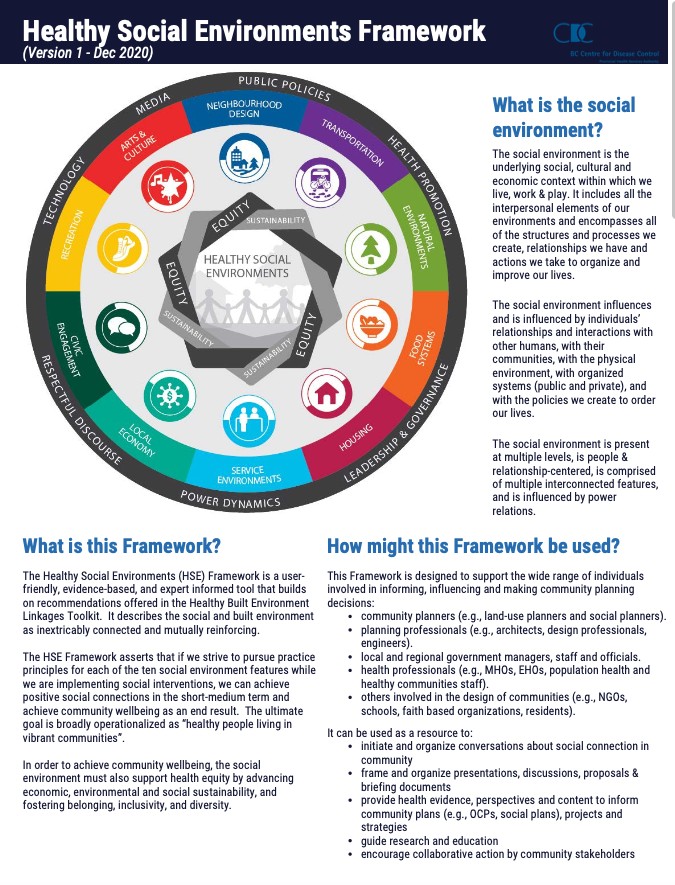Healthy Social Environments Framework

The importance of social health and social connections (e.g. neighbourliness, positive social interactions, social support) as well as positive perceptions about one’s local community (e.g. inclusivity, accessibility, safety and trust) has received growing recognition for its significant impact on our overall quality of life and well-being. Positive social connections can be increased not only through the physical built environment but also through the less obvious, sometimes invisible, influencers that affect how we organize and improve our lives. Things such as local policies, programs, resource opportunities as well as structural drivers such as media, technology and power dynamics all have an impact on how we think, feel and relate to each other and our communities. These influencers contribute to a social context that we are calling the “social environment”.
To understand the social environment, we must first take a step back to get a bigger picture of the local neighbourhood systems and contexts which influence and frame our experiences. This conceptual framework describes social aspects related to 10 neighbourhood features in order to build a broader perspective of the social environment as a holistic and dynamic context. Recognizing integrated social environment factors is a meaningful contribution towards addressing truth and reconciliation goals, such as supporting traditional ecological knowledge, increasing access to land-based activities and traditional food sharing customs (Armstrong-Pritty, 2018).
The aim of this resource is to:
- Make the invisible aspects of the social environment visible, and raise awareness of the importance of social connections and social health,
- Support Indigenous ways of knowing and the goals of Truth and Reconciliation by moving towards holistic approaches and awareness of how social and built environments interact,
- Offer a common frame of reference to support conversations, initiatives, policies and collaborations which advance social health priorities,
- Strengthen relationships between public health, local governments and community groups by building on the Healthy Built Environment Linkages Toolkit conceptual framework and planning principles.
